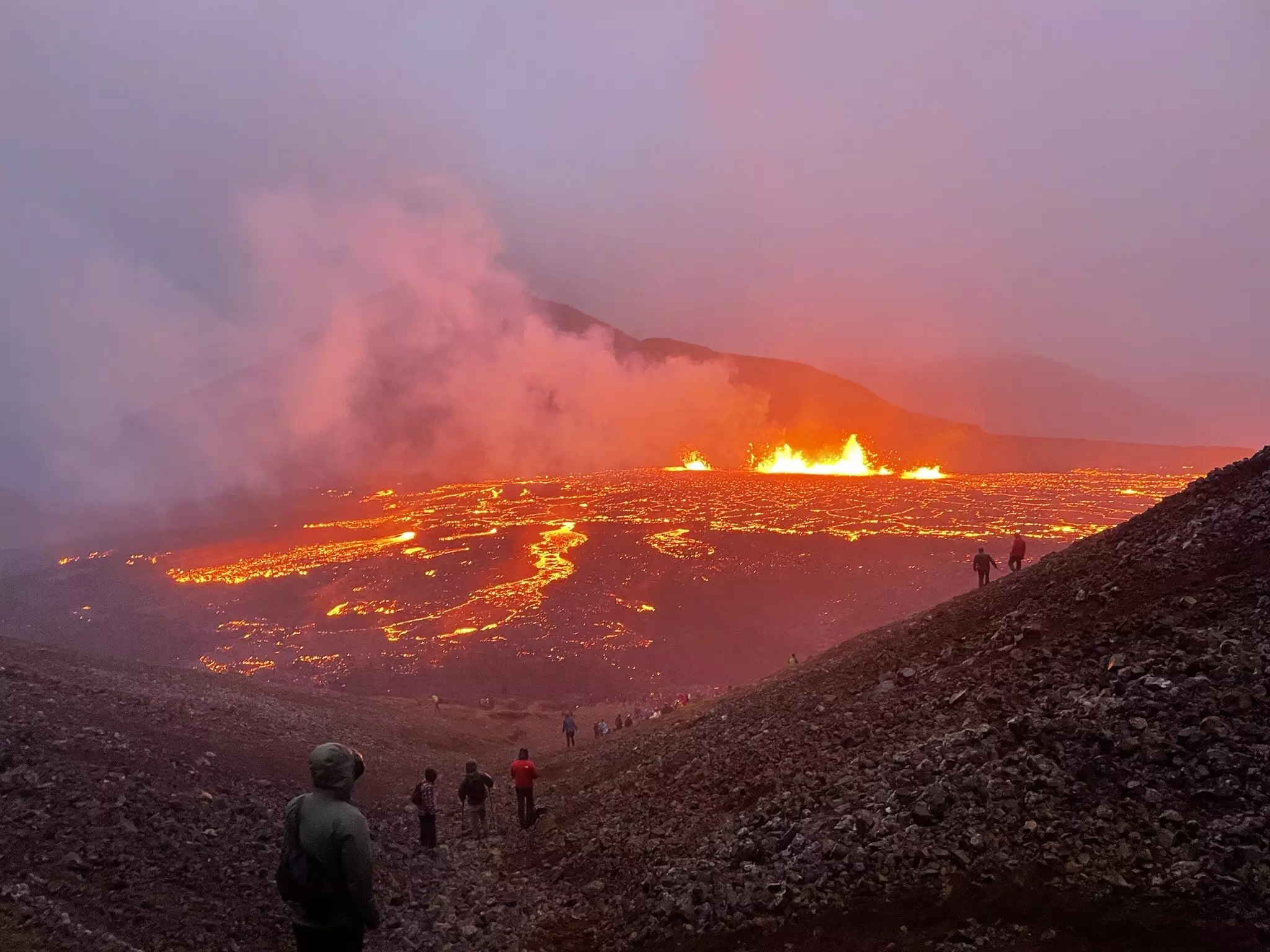The landscape of volcano research is experiencing a significant shift, thanks to groundbreaking studies conducted at the Scripps Institution of Oceanography at UC San Diego. The investigation into the Fagradalsfjall Fires, which erupted on Iceland’s Reykjanes Peninsula in 2021, offers profound insights into the mechanics underpinning volcanic eruptions. Rather than a straightforward ascent of magma from the Earth’s mantle as previously believed, researchers reveal that substantial amounts of magma had pooled and melted beneath the surface before erupting. This paradigm shift not only enhances our understanding of Icelandic volcanism but also has implications for volcanic hazard forecasting worldwide.
The Art of Geochemical Sampling
Central to this research is a meticulous time-series analysis of the lava samples collected during the eruptions. Lead researcher, geologist James Day, likens the process to drawing blood from a patient, where the “blood” of the volcano—its lava—is examined for critical geochemical markers. Continuous sampling allows scientists to map the evolution of the eruption, illuminate its origins, and ultimately reveal the subsurface dynamics at play. This innovative approach highlights the significance of consistent monitoring, enabling scientists to make real-time deductions about volcanic behavior.
Regular analysis demonstrating changes in isotopic composition provides compelling evidence that the Fagradalsfjall eruption was influenced by crustal interactions, contradicting prior models suggesting purely mantle-origin lava. Through the isotopic behaviors of osmium and its parent element, rhenium, researchers were able to discern the crustal contamination in the early eruption lavas. This discovery marks an important contribution to volcanic studies, emphasizing how nuanced geochemical analyses can unlock the mysteries of what lies beneath the surface.
Building on Historic Foundations
Day and his team’s efforts extend beyond the stunning volcanic fires of Iceland; their research includes investigations of other significant eruptions, such as those on the islands of La Palma and Hawaii. Discovering similarities in the magma pooling during these varied volcanic events proposes that crustal magma storage may not be an isolated phenomenon. Instead, it might represent a common precursor to larger basaltic eruptions globally. This concept not only broadens our analysis of volcanic hazards but also signals the critical interconnectedness of geological processes across different regions.
The implications of identifying these crustal contributions to eruptive activity could reshape volcanic hazard assessments. By grasping the ways in which magma interacts with the crust, emergency preparedness and risk management strategies may become more precise, offering communities a better chance to respond to potential threats.
The Role of Elemental Isotopes
The study showcases how tailored isotopic analysis can yield groundbreaking insights into volcanic activity. Leveraging the distinct behaviors of rhenium and osmium allows researchers to trace the origins of magma with unprecedented clarity. The sensitivity of osmium isotopes enables clear differentiation between mantle and crustal sources of magma, a crucial aspect for understanding the nature of eruptions.
In light of this research, one cannot help but express awe at the complexity of the geological layers beneath our feet. By utilizing cutting-edge analytical techniques, scientists are peeling back the layers of Earth’s history, providing a more nuanced view of the relationships between various geological elements. Johns’s observations on the remarkable signals found in the early lavas not only astonished the research team but also paved the way for future studies aimed at unraveling volcanic behavior.
Looking Ahead to Future Eruptions
As eruptions persist in Iceland, researchers like Day are committed to ongoing investigations aimed at expanding our understanding of basaltic volcanism. The potential longevity of volcanic activity in the region echoes the sentiment that these events are not merely natural phenomena but represent a rich tapestry of geological history waiting to be studied. With previous eruptions lasting centuries, the Fagradalsfjall Fires are likely to contribute valuable data long into the future.
The research conducted at Scripps Oceanography stands as a beacon of scientific inquiry, urging us to appreciate the intricacy of geological systems. The combination of advanced analytical techniques and interdisciplinary collaboration cultivates a fertile ground for new discoveries. In unlocking the secrets of the Fagradalsfjall Fires, researchers are not just observing a volcanic spectacle; they are redefining our understanding of the processes that govern Earth’s fiery heart—and equipping us with insights to better navigate the challenges posed by natural hazards.
By sharing this knowledge, scientists are not merely documenting geological events; they are empowering communities and advancing a collective comprehension of the natural world. This new perspective underlines the importance of continuous scientific exploration to deepen our connection with the Earth and its dynamic, ever-evolving systems.

